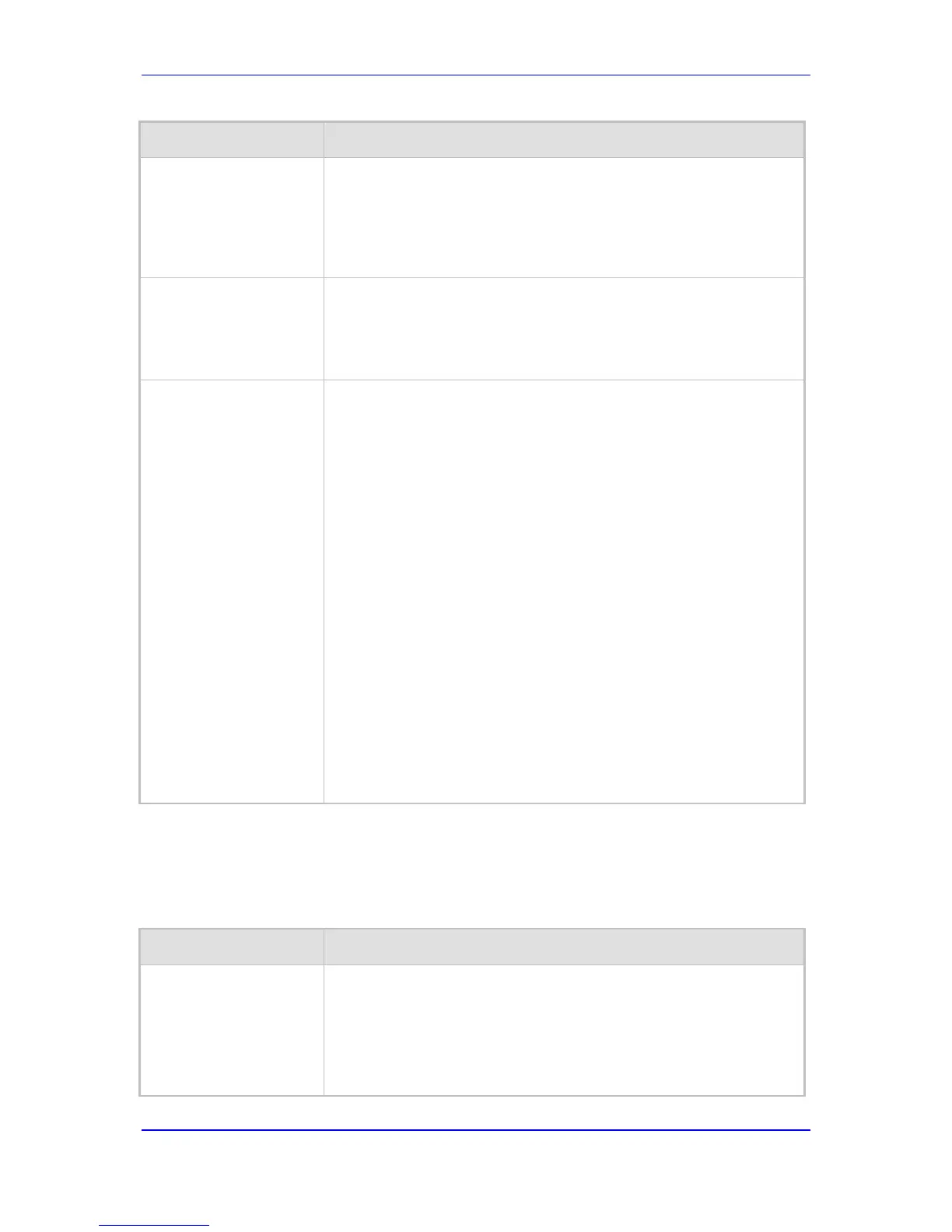Parameter Description
Web: Establish
Conference Code
EMS: Establish Code
CLI: estb-conf-code
[ConferenceCode]
Defines the DTMF digit pattern, which upon detection generates the
conference call when three-way conferencing is enabled
(Enable3WayConference is set to 1).
The valid range is a 25-character string. The default is “!” (Hook-Flash).
Note: If the FlashKeysSequenceStyle parameter is set to 1 or 2, the
setting of the ConferenceCode parameter is overridden.
Web/EMS: Conference ID
CLI: conf-id
[ConferenceID]
Defines the Conference Identification string.
The valid value is a string of up to 16 characters. The default is "conf".
The device uses this identifier in the conference-initiating INVITE that is
sent to the media server when the Enable3WayConference parameter
is set to 1.
Web: Use Different RTP
port After Hold
CLI: use-different-rtp-port-
after-hold
[UseDifferentRTPportAft
erHold]
Enables the use of different RTP ports for the two calls involved in a
three-way conference call made by the FXS endpoint in the initial
outgoing INVITE requests.
[0] Disable = First and second calls use the same RTP port in the
initial outgoing INVITE request. If a three-way conference is then
made, the device sends a re-INVITE to the held call to retrieve it and
to change the RTP port to a different port number.
For example: The first call is made on port 6000 and placed on hold.
The second call is made, also on port 6000. The device sends a re-
INVITE to the held call to retrieve it and changes the port to 6010.
[1] Enable = First and second calls use different RTP ports in the
initial outgoing INVITE request. If a three-way conference is then
made, the device sends a re-INVITE to the held call to retrieve it,
without changing the port of the held call.
Notes:
When this feature is enabled and only one RTP port is available,
only one call can be made by the FXS endpoint, as there is no free
RTP port for a second call.
When this feature is enabled and you are using the Call Forking
feature, every forked call is sent with a different RTP port. As the
device can fork a call to up to 10 destinations, the device requires at
least 10 free RTP ports.
This parameter is applicable only to FXS interfaces.
66.11.5.8 MLPP and Emergency Call Parameters
The Multilevel Precedence and Preemption (MLPP) and emergency E911 call parameters
are described in the table below.
MLPP and Emergency E911 Call Parameters
Parameter Description
Web/EMS: Call Priority
Mode
CLI: call-prio-mode
[CallPriorityMode]
Enables priority call handling for all calls.
[0] Disable (default).
[1] MLPP = MLPP Priority Call handling is enabled. MLPP prioritizes
call handling whereby the relative importance of various kinds of
communications is strictly defined, allowing higher precedence
communication at the expense of lower precedence

